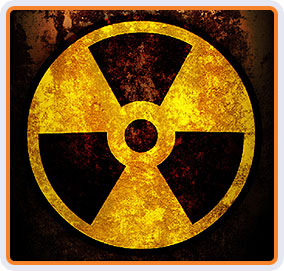Food Irradiation Testing

Eurofins is to our knowledge the only European provider to offer a complete spectrum of five different methods for the detection of irradiated materials. Irradiating food with energy-rich radiation such as gamma-rays and electron beams is used for several different purposes, for example:
- prevention of germination and sprouting of potatoes, onions and garlic;
- killing/ sterilising insects which infest grains, dried fruit, vegetables or nuts;
- retardation of the ripening and ageing of fruit and vegetables;
- prolongation of the shelf-life of food
- prevention of food-borne diseases by reducing the number of micro-organisms.
Worldwide about 250,000 tons of food and dietary supplements are irradiated annually, the major part of which are spices. The amount and number of foods that need to be irradiated is increasing steadily. A study in the UK showed that 42% of all dietary food supplements have been irradiated. In the USA, any food that is irradiated or contains irradiated food ingredients must be labelled. In all member states of the EU, irradiated food such as herbs and spices have to be labelled in accordance with directive 1999/2/EC.
Irradiation Services at Eurofins
Eurofins offers irradiation testing in food, dietary supplements and food additives according to the following EN-methods: electron spin resonance (ESR, prEN 13708), photostimulated luminescence (PSL, EN 13751), thermoluminescence (TL, CEN 1788), the DNA-comet assay (EN 13784) and the analysis for the identification of alkylcyclobutanones (EN 1785), compounds that result from irradiation treatment of fatty products. As these chemical compounds are thought to be carcinogenic, the demand for their detection is increasing.
Analytical Methods
Photostimulated luminescence (PSL), electron-spin resonance (ESR) and thermoluminescence (TL) are the most commonly used physical techniques to analyse spices, herbs, dried fruits and nuts. ESR detects paramagnetic centres like radicals, which can be found in solid and dry parts of food such as bones, seeds, pips, stones and peels. This allows not only the analysis of dried food, but also of meat, seafood, fresh vegetables and fruits as well as food packing materials. PSL and TL detect light, which is emitted from irradiated minerals like silicates upon stimulation with light (PSL) or heat (TL). PSL is a fast and reliable screening method, whereas TL requires isolation of silicates from the test material and a second glow of the same sample after exposure to a fixed dose of radiation.
This suite of techniques makes Eurofins one of the very few commercial laboratories worldwide offering the full set of methods available for food-irradiation testing.
Our laboratories constantly invest in R&D to develop and validate new analytical methods. We also keep a close eye, on a daily basis, on scientific developments and changes to national and international legislation.





